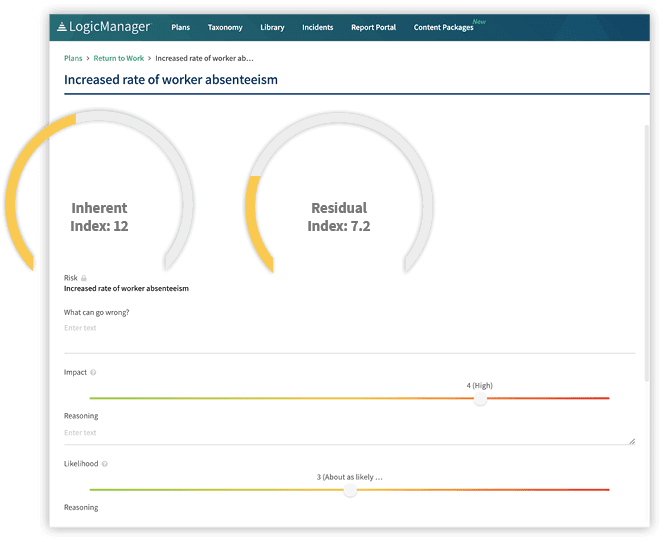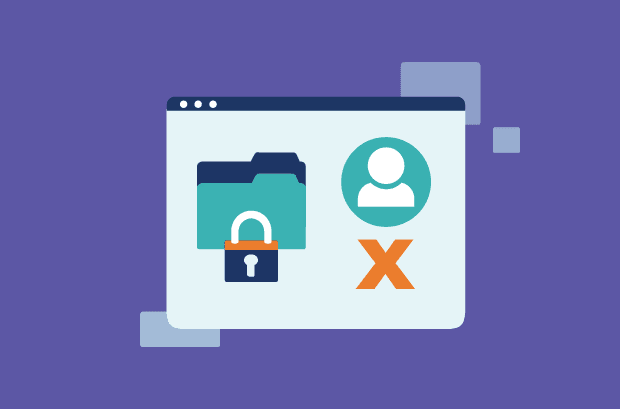How to Safely Automate Employee Onboarding
Last Updated: January 14, 2025
Employees are a core part of any organization. After working hard to find and hire the best of the bunch, you might think you’re all set. But you still need to teach your new employees the ropes.
For risk managers, onboarding is more than just welcoming new team members — it’s about ensuring everyone understands compliance while preventing business risks. Traditional onboarding is time-consuming and challenging to scale. How do you get everyone up to speed without compromising security? That’s where automation comes in.
Automation streamlines the most repetitive onboarding tasks, saving your team time while boosting security and compliance. Investing a little time into HR automation can deliver excellent security returns for your company.
Table of Contents
What Is Employee Onboarding Automation?
Employee onboarding automation is a more advanced way to train new team members. Automation is an umbrella term for using technology to complete tasks with less human intervention — for example, picture a robot arm working on a production line or a welcome email sent as soon as you subscribe to a page. Risk managers can use automation to train new employees without increasing security risks.
Automation technology streamlines and standardizes the new hire process, reducing labor. Automation tech lets you integrate your HR systems, IT platforms and compliance tools, automating tasks like document collection, compliance training and policy understanding. With all these systems integrated, you can create a more secure, efficient process for everyone.
The Benefits of Automating the Onboarding Process
Automating the onboarding process is about more than speed. Your onboarding sets the tone for an employee’s time at the company, which means the smoother the onboarding, the better the employee feels about joining your organization. Automation can help make this process easier while protecting security. Some of the benefits of automating your onboarding process include:
- Increased efficiency: Automation handles repetitive manual tasks. You’ll make onboarding more efficient by automating paperwork and modules.
- Improved accuracy: Manual processes can lead to frequent errors. After all, we’re only human. Missing a signature or misplacing documents can set onboarding back, while automated workflows keep tasks recorded and on track.
- Effective compliance: Highly regulated industries must make sure employees complete all required steps. Automation ensures all required background checks, policy acknowledgments and training are completed and documented. Your team information is audit-ready at all times.
- Better employee experience: A streamlined onboarding process means happier employees. Automation keeps employees moving through training tools and resources, granting access to everything they need while staying in the groove. A positive first impression makes all the difference for your company.
- Higher savings: Reducing errors and manual tasks saves your organization money, making automation a cost-effective solution. If you extend your automation to security and attack prevention, your organization could see an average cost savings of $2.22 million.
Identifying Risks in Your Automated Onboarding Process
Automated onboarding might come with lots of benefits, but risk managers need to identify risks to protect the company. Automated onboarding is a new system, which means new potential threats to prepare for. Once you know these risks, you can create effective use policies to maximize efficiency and security:
- Data security gaps: Automated onboarding collects and stores sensitive data. Weak encryption or poor access controls can leave your data vulnerable to breaches.
- Compliance issues: Automation simplifies compliance, but system errors can lead to missed areas. Industries that follow strict regulations, like healthcare, must be aware of risks and double-check everything.
- Workflow design: Poor workflows and system integration issues can create problems. The system might skip steps or cause bottlenecks, or a glitch in the software might prevent new hires from receiving IT access. Automated systems need correct setup and security to be effective.
- Overdependence: Relying on automation can lead to complacency. Technical issues could delay the onboarding process, affecting new hires. Your organization must stay on top of the system to keep everything working correctly.
How to Create a Safer Automated Onboarding Experience

Automated onboarding enables your company to transform employee integration by boosting onboarding efficiency, compliance and experience. However, automation also introduces new safety risks for your team.
Risk managers must work to maximize automation’s benefits while reducing potential threats. Balancing these areas means investing in proactive measures.
1. Assess Risks
Like all systems, you need to understand what you’re working with. Identify potential risks in automated onboarding by looking for unsecured data transfers, system over-reliance or gaps in compliance protocols. Map these risks to understand how they might ripple through your organization. When you connect your HR, IT and compliance maps, you’ll see all the potential threats you should prepare for. Adopting a framework such as the Risk Maturity Model will help you to systematically identify and assess risks.
2. Choose Secure Platforms
Automation security is only as good as the technology you use. Look for tools that integrate with your existing systems, reducing data silos. The more access you have to information, the easier it is to address risks proactively. Use platforms with quality security, like end-to-end encryption and multifactor authentication. Ensure that third-party vendors comply with your security standards and conduct regular audits to verify their compliance.
3. Create Clear Policies and Controls
Your automated onboarding processes should follow well-defined policies that meet regulatory requirements and have redundancies. Create clear policies that are easy to read and review for better transparency. It’s important to conduct regular training and awareness programs to ensure that all employees understand and adhere to the policies and controls. This could include scenario-based training to simulate potential security breaches.
Regularly update your policies and controls to stay ahead of threats and regulations while meeting your business needs.
4. Use AI to Rank Risks
Artificial intelligence (AI) powered tools can improve your security by analyzing patterns and identifying emerging risks. AI can rank potential compliance issues or flag unusual activity in access permissions. It alerts you to potential problems so you can intervene early.
With predictive AI, you can find and prevent risks that might have stayed hidden until it was too late.
5. Check Regularly
Even the best-automated systems need some oversight. Regular onboarding audits ensure everything works as intended. Audits can help spot new vulnerabilities, suggest improvements and measure your organization’s compliance. Consider investing in real-time analytics to make risk management more responsive.
6. Encourage Collaboration
Safety is a team effort. Automation should streamline onboarding, and humans should manage it. Assign risk managers to oversee the process, check flagged issues and provide support. You should also encourage new hires to speak up. As system users, they have the best view of its effectiveness. Tell them to ask questions, report concerns and provide feedback. With everyone working together, you’ll keep automation safe and effective.
7. Educate Your Team
Your team is the first line of defense against attacks. Human error accounts for 88% of security breaches. Your people need to understand how automated onboarding works and how to reduce safety risks. Give everyone regular training on using automated tools and ensuring security and compliance.
Get the Full Picture With LogicManager
Automated onboarding is a great way to make the new hire experience easier for everyone. An effective system can have a ripple effect on your organization. New processes create unexpected impacts for your team. Risk managers work hard to stop problems in their tracks, but how do you prepare for something you can’t see? LogicManager’s Risk Ripple Analytics helps you uncover and address these hidden threats before they escalate.
You’ll act proactively instead of reactively with our solutions. Our suite of tools connects people, processes and insights instantly, breaking down silos for more effective risk management.
Request a demo to see how LogicManager’s solutions can protect your organization from unseen threats, or contact us directly with any questions!





